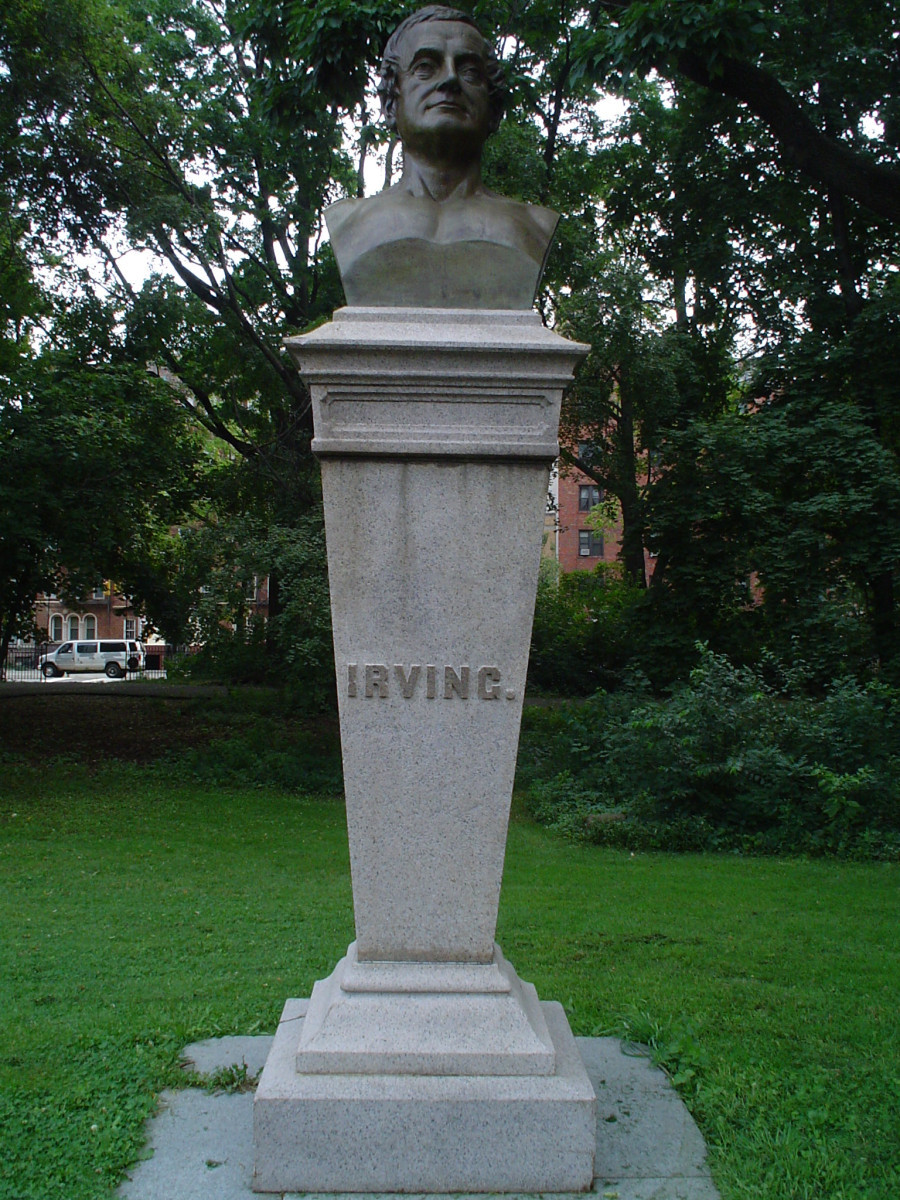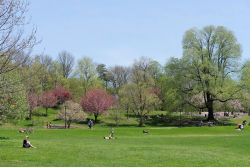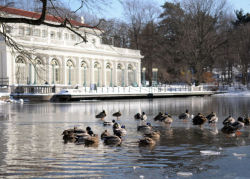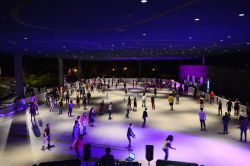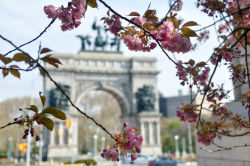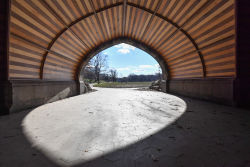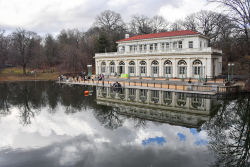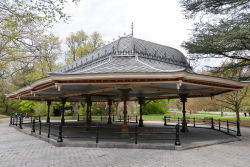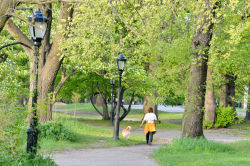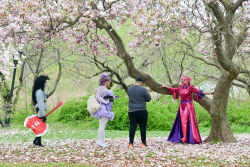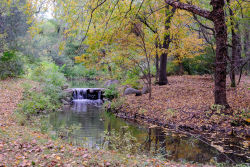Prospect Park
View all monuments in NYC Parks, as well as temporary public art installations on our NYC Public Art Map and Guide.
Washington Irving Memorial
| Artist: | James Wilson Alexander MacDonald |
| Dedicated: | 1871 |
| Location: | Flower Garden |
Artwork History
This bronze bust of New York author, essayist, historian, and foreign diplomat Washington Irving (1783–1859) was created by sculptor James Wilson Alexander MacDonald (1824–1908). Dedicated in 1871, the statue is one of seven in the vicinity of the Concert Grove, including four portraits of composers.
The original plan of Prospect Park, designed by Frederick Law Olmsted and Calvert Vaux in 1866, left blank this area of the park, except for the written labels “Concourse for Pedestrians” and “Music Stand.” With the park under construction around 1870, Olmsted and Vaux elaborated their design to accommodate musical performances. Within an otherwise pastoral park, they set formal grounds with terraces and a radial arrangement of walkways, punctuated by lineally arranged trees, lavish floral beds, and elaborate decorative carvings in New Brunswick sandstone. Noting that, “Promenade concerts are common in many European pleasure grounds [and were] universal in German towns, common in French, and less so in British,” they sought in the concert grove to achieve a place with this purpose in mind.
At the north end was built the Concert Grove House, demolished in 1949, and at the south end Vaux designed the Concert Grove Pavilion, completed in 1874. Made of eight cast-iron posts modeled after Hindu columns of the medieval period (8th to 12th centuries), and supporting an elaborately painted hipped roof with stained-glass cupola, the structure—restored in 1987—is also known as the Oriental Pavilion. At one time it was used as an open-air restaurant.
In 1887, the Music Pagoda was built near the Lily Pond, and with the subsequent establishment of a new music grove at the north edge of the area of the park known as the Nethermead, this area came to be referred to as the Flower Garden.
The Concert Grove possesses a rich collection of bronze sculptural portraits. Three—Henry Baerer’s bust of Ludwig van Beethoven (1894), Chester Beach’s Carl Maria Von Weber (1909), and this statue—were donated by the United German Singers of Brooklyn as trophies which they had won in the national Saengerfest choral competitions.
Irving, the subject of this sculpture, was a literary lion and man of letters who helped define the image of New York, and whose tales and characters have entered American folklore. Born on April 3, 1783, he spent his childhood in Lower Manhattan at a time when the city’s population was largely concentrated there. As a young man he studied law, traveled to Europe and the American frontier, and contributed essays on New York society and the theater to local periodicals. Though trained as a lawyer, his frail physical health prevented that career, and family wealth allowed him to live a life as a man of letters. In 1807-08 he co-published the humorous journal Salmagundi. His literary breakthrough came with his publication under the pseudonym Diederich Knickerbocker of the satirical fictional account entitled A History of New York from the Beginning of the World to The End of The Dutch (1809).
In 1815, he moved to England to manage the Liverpool branch of his family’s hardware business, but the enterprise failed. He resided in Europe for 17 years, and worked as a diplomat at the American embassy in Madrid, and later in London. During this period he authored numerous manuscripts, several of which, such as Rip Van Winkle and The Legend of Sleepy Hollow (collected in The Sketch Book of Geoffrey Crayon, Gent. 1820), have become literary classics. After returning to the United States, he published an account of frontier life in A Tour of the Prairies (1835). He resided at Colonnade Row in Greenwich Village, and then at a homestead, “Sunnyside,” near Tarrytown, in what is now Irvington, New York. Sunnyside still stands as a public museum, managed by Historic Hudson Valley. Irving served as minister to Spain from 1842 to 1846, and returned to his Hudson River estate, where in his waning years he issued a five volume biography of George Washington (1855-59).
MacDonald’s bronze bust combines a naturalistic facial likeness with the classical convention of a bare shouldered portrait. The piece, a gift of Demas Barnes, is installed on an unusual inverted pyramidal granite pedestal. The sculptor, a well-known artist of his day who received numerous public and private commissions, also sculpted a portrait of the poet Fitz-Greene Halleck (dedicated 1877), which stands in Central Park’s Literary Walk and a heroic bust of Civil War General Winfield Scott Hancock (1891) located in Harlem’s Hancock Square.
In 1997, the City Parks Foundation Monuments Conservation Program conserved the Irving statue, with funding from the Florence Gould Foundation.
Artwork Details
| Description: | Bust on pedestal |
| Materials: | Bronze, granite |
| Donor: | Demas Barnes |
| Cast: | ca 1871 |
Inscription
BUST IS SIGNED FREDERICH BEER ON BUSTPlease note, the NAME field includes a primary designation as well as alternate namingsoften in common or popular usage. The DEDICATED field refers to the most recent dedication, most often, butnot necessarily the original dedication date. If the monument did not have a formal dedication, the yearlisted reflects the date of installation.
For more information, please contact Art & Antiquities at (212) 360-8163.
Check out your park's Vital Signs
Clean & Safe
Green & Resilient
Empowered & Engaged Users
Share your feedback or learn more about how this park is part of a
Vital Park System
